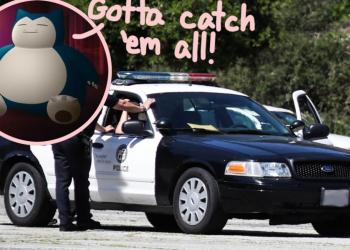
Use of a Patrol Unit’s Digital In-Car Video System (“DICVS”) in a Police Disciplinary Proceeding
LAPD’s Special Order No. 45 and Notice 13.5 do not prevent the use of an unintentionally recorded conversation between patrol officers in their patrol vehicle in later disciplinary proceedings, obtained through the vehicle’s “digital in-car video system” (or “DICVS”), where the recording reflects evidence of criminal or egregious misconduct. Penal Code § 632—the eavesdropping statute—and subdivision (d) do not prevent the use of recorded confidential communications in later disciplinary proceedings where the recording are not intentional. The Public Safety Officers Procedural Bill of Rights Act, or “POBRA” (Gov’t. Code §§ 3300 et seq.) is not violated by a police supervisor when he meets with his unrepresented, unadvised, subordinates in the normal course of the supervising officer’s duty to provide counseling and instruction which was routine and expected of a supervisor.
Louis Lozano and Eric Mitchell were LAPD patrol officers in 2017, assigned together as partners to a foot beat patrol, Southwest Division. Their primary responsibilities included providing community services and addressing “quality of life” issues in what’s known as the Crenshaw Corridor and Leimert Park area. Sergeant Jose Gomez was their patrol supervisor at the time. Captain Darnell Davenport was the patrol commanding officer for the Southwest Division. On April 15, 2017, a “211 (robbery) in progress” call came out, involving multiple suspects, at the Macy’s in the Crenshaw Mall. Cpt. Davenport, who at that moment was on his way to a homicide scene, responded to the 211 call in that he was close (within sight of the Macy’s) and no other patrol units were responding. As he got close to Macy’s, the Captain saw a patrol car tucked back into an alley, just feet away from the store. As Cpt. Davenport watched, the patrol car backed up, moving down the alley in the opposite direction, and negotiated a left-hand turn to leave the area. That patrol car, as it was later discovered, was occupied by Officers Lozano and Mitchell.
Sgt. Gomez was in the watch commander’s office when the robbery-in-progress call came out. Looking at the watch commander’s board, he saw that Lozano and Mitchell were located (or “Code 6”) in the Crenshaw Corridor. The Sergeant radioed the officers, requesting that they respond to the 211. He got no response. This necessitated another unit breaking away from the homicide scene and proceeding Code 3 (lights and siren) to cover Cpt. Davenport at the robbery scene as Lozano and Mitchell continued to fail to respond. Once all the excitement died down, Sgt. Gomez requested a meet with Lozano and Mitchell. When asked about whether they’d heard the 211 call, Mitchell said he had not while Lozano said he heard Captain Davenport was Code 6 at the Crenshaw Mall but he did not hear a request for backup. The officers complained that noise in the area made it difficult to hear their radio. Told merely to pay better attention to the radio calls, the counseling session was ended.
Sgt. Gomez, however, was still a bit uneasy about Lozano and Mitchell’s failure to respond to the robbery call. So he decided to check their patrol unit’s “DICVS” (digital in-car video system) recording to “find out what they do on their average day.” Checking the DICVS the following day, Sgt. Gomez listened to and observed Lozano and Mitchell discuss the robbery call as it came out, and debate whether they should respond. Sgt. Gomez thus discovered that not only did Lozano and Mitchell hear the call to back up Cpt. Davenport at the Macy’s robbery, but that they consciously chose to ignore it, commenting, after some laughter regarding Captain Davenport; “I don't want to be his help.” The two officers therefore decided to “screw it,” rather than respond. Perhaps even more amazing was the discovery that at the time, Lozano and Mitchell were actively involved in playing a game called “the Pokémon Go video game.” (If you’ve never heard of it, “Pokémon Go” is an “augmented reality” mobile phone game that “uses a mobile device’s GPS to locate, capture, battle, and train virtual creatures, called Pokémon, which appear as if they are in the player’s real-world location.” See footnote #2 in the decision for a full description of this game.)
A formal complaint was eventually filed by Sgt. Gomez and the officers’ alleged misconduct was investigated. Per the complaint, Lozano and Mitchell: [1] Failed to respond to a robbery-in-progress call; [2] made misleading statements to Sergeant Gomez when asked why they did not hear the radio; [3] failed to respond over the radio when their unit was called; [4] failed to handle an assigned radio call; [5] Played Pokémon Go while on patrol in their police vehicle; and [6] made false statements to the Internal Affairs detective during the subsequent complaint investigation. Both officers either pled guilty or were found guilty by a “Board of Rights” of all allegations except # [4] (failing to handle an assigned radio call). The Board unanimously recommended that both Lozano and Mitchell be fired; a recommendation adopted the Chief of Police. Lozano and Mitchell filed in court a petition for administrative mandamus in an attempt to get their jobs back. The trial court denied their petition and they appealed.





